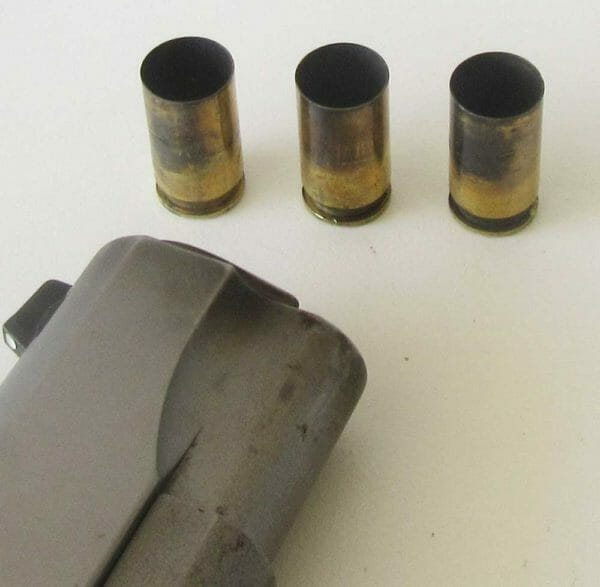
U.S.A. –-(Ammoland.com)- Sig Saur has been around for years and has been known to produce high-quality handguns. Their handguns are carried by many police forces and civilians. They also produce some ammo in some of the common offerings which I have tested in the past with good results. The factory ammo is a premium type and is for the serious hunter or target shooter. They have various rifles and handguns plus accessories for them. They also have a training academy for various skill levels. For info go to SIG Sauer for complete info.
Recently they have introduced some common caliber brass casings. I requested and received some 22-250, 10mm, and 45 auto cases for testing. The market has several established companies that produce good quality cases at reasonable prices. Therefore, for a company breaking into the market needs to make a good product at a fair price in order to succeed. In the past, I have tested their factory loaded ammo and was always satisfied with its performance. During this testing, I used a couple of new powders which will show up in future pieces plus a couple of non-standard loads. Doing everything standard doesn’t always give you a complete view of how a product works. The Sig brass did well in all tests. When they expand their line I will get some to make other cases which is a test of quality.

Click Here to Buy SIG Sauer Brass: 22-250, 10mm, & 45 Auto
One way to measure quality is to ensure that the product is consistent meaning that each unit has to be as close as possible to the next unit. That means that they have to weigh the same, same length, neck thickness consistent, and the primer pocket and flash hole has to be very consistent. Those features contribute to good accuracy. It is impossible for each case to be exactly the same in every regard but good cases are close. I took some of the cases provided and did some measurements.
The 45 auto cases were measured for length measuring a dozen cases showed from .8954 to .8956. That is a difference of .002” which I would consider very good. The weight was from 89.3 to 89.5 again very good. They were primed and the primer weighs 3.5 grains. The neck thickness never varied more than .001 from side to side again nice. The primer pockets and flash holes are consistent. If accuracy is important then you should give these cases a try. I did notice a slight bevel on the rim’s edge which isn’t evident on other brands. It has no effect that I can see in any performance aspect but there may be a reason for it.
One load, in particular, was warm, the 230 gr FMJ showing 978 FPS. That is about 100 FPS faster than a normal load using that type of bullet. The 100 FPS may not sound like a lot but it is approximately 12% faster than a normal load which usually clocks out at 830 to 850 FPS, therefore you should regard that load as a potential problem. The cases show slight signs of pressure but the primers were still tight and no bulging but I would not recommend that load. By the way, the CCI primers are tighter than the WW brand but that isn’t a knock on either.
The 22-250 cases varied in length from 1.904 to 1.906 which is consistent. The weight was from 154.1 to 154.3 a difference of .002 grains. The neck thickness never varied more than .001” which contributes to good accuracy. Likewise, the primer pockets and flash holes are consistent. A good 22-250 load with good ammo is capable of fine accuracy and in my thought process, it is the best all-around 22-centerfire. I loaded them and everything feels the same including priming.
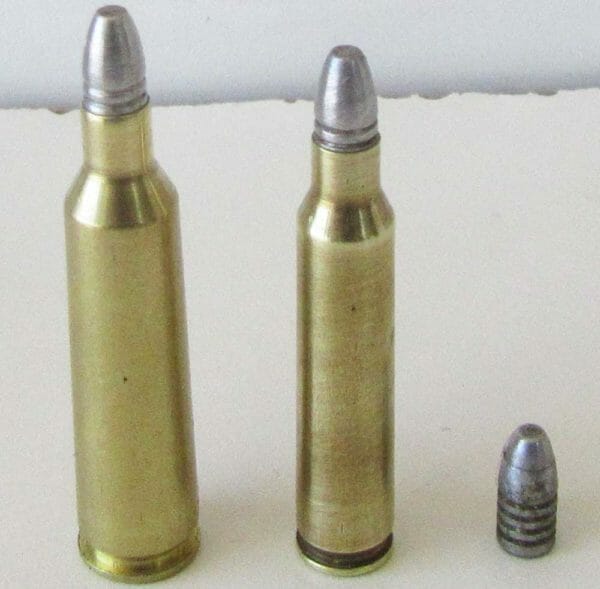
An often-overlooked aspect of reloading is using your feel. Paying attention to that will enable you to get some info in regards to consistency. If everything feels the same chances are the brass is good. There are various ways to study quality and while not all are scientific they can be just as accurate. There were a couple of loads that were excessively warm and the cases show the signs. In addition, the primers were looser which is normal when hot loads are employed. That is why if you want to extend brass life you back off a little. There was no sticky extraction or bulges though one primer came out. The Sig cases acted like any quality product would have done so.
There are other ways to judge brass such as looks. If it looks like it just survived a rainstorm chances are it is inferior brass as the maker does not take the necessary steps to produce top-grade cases. I have run across some bad brass and it is not much fun to work with. In all honesty, high-quality brass won’t make an average gun shoot better nor will it aid an average shooter to raise his scores. I am not a competitive shooter and have shot many nice groups using cases of different brands and as long as they were in good shape the groups were fine. When you are reloading the cases pay attention to the feel. If you are sizing or priming each case should feel the same as the others. While not scientific it is an indication of quality if they all feel the same. After being fired they still felt the same.

Something that is important to me is the ability to make a case into something else without excessive loss. Some operations put a lot of strain on a case which will test them for durability. Cases are annealed to help prevent neck splitting during sizing. If the cases start to show splits after only one or two firings chances are they are brittle. All cases will eventually get brittle necks but it usually takes at least 8 firings often more on good cases. With normal, not hot, loads primer pockets shouldn’t expand until as least several firings. If the ammo is not consistent that usually isn’t the fault of the case but the load. If a gun doesn’t like a load, a good case won’t help.
The proof in the pudding is in the shooting and during these tests cases will be subjected to various loads from cast to warm to see how they react. I used some new powders such as the Shooter’s World products as the two listed here. The Alliant RL # 16 is also used. The Alliant line has been around for many years and has a lot of good powders available for more info click here.
A new company at least to me is Shooters World, they have a variety of powders and anyone who reloads should check them out. I have limited experience now but I like what I have seen. With reloading growing by leaps and bounds there is always room for quality products. For info go to https://shootersworldpowder.com/.
The 22-250 has been around for many years for good reason. It is a great round and my personal favorite 22 centerfire. It can do anything that can be done with a 22. The initial loads were mild to get a starting point.
Due to the light loads, the cases were smoked meaning that the pressure was so low that they didn’t expand enough to seal the chamber. That is quite normal and the cases did what was expected. Preparing the cases for reloading shows that they are consistent as the feel was the same with all operations.
For example, if some cases were harder to size then others that may be an indication of cases that were not consistent. They didn’t stretch so trimming wasn’t necessary and the primers seated consistently.
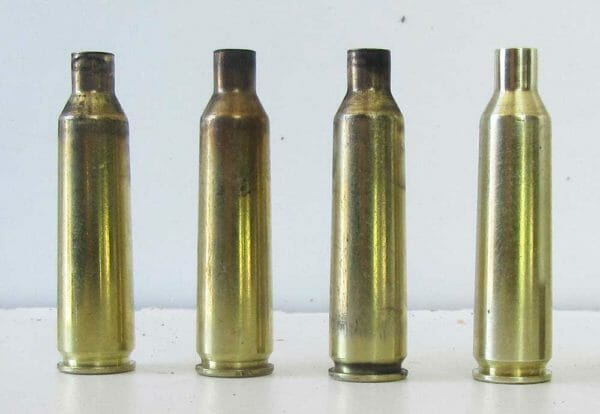
Loads listed as max should be approached with caution, starting from 2 to 3 grains below and carefully work up. Every gun is different and will react differently with the same loads in another rifle.
Reloading Info for 22-250 Brass
| LOAD | BULLET | VELOCITY | COMMENT |
|---|---|---|---|
| 5 grs Red Dot | 40 gr Cast | 1619.5 | Consistent |
| 8 grs Green | 40 gr Cast | 2117.11 | Decent Load |
| 15 grs D060 (5744) | 45 gr HP | 2067.1 | Fair |
| 38 grs D073 | 50 gr | 3852 | MAX! |
| 40 grs D073 | 50 gr | 4104.4 | HOT! |
| 35 grs D073 (4895) | 53 gr HP | 2337.8 | High ES |
| 39 grs D073 | 53 gr HP | 3945.8 | HOT! |
| 38 grs RL # 16 | 53 gr HP | 3280.3 | High ES |
| 35 grs RL # 16 | 55 gr | 2846.3 | Very High ES |
| 38 grs RL # 16 | 55 gr | 3547.2 | Better but High ES |
| 38 grs D060 | 55 gr FMJ | 3734.1 | Very High ES Hot! |
| 34 grs D073 (4895) | 55 gr | 2384.4 | Very High ES |
| 36 grs D073 | 55 gr | 3647.3 | High ES |
| 32 grs RL # 16 | 77 gr HP | 2810.4 | High ES |
| 34 grs RL # 16 | 77 gr HP | 3016.7 | Better |
The 10 mm brass came in so it will be included. Measurements show that they are consistent in length being from 1.086 to 1.088. Like the 45 auto, it headspaces on the mouth so a consistent length is important for consistency. Weights went from 80.9 to 85.5 grains so no problem there either. Weighed cases had a live primer in them. The 10 mm is fairly popular and a powerful round that can be used for some hunting with a heavy bullet. Self-defense bullets and loads are available. The only problem some shooters have is the recoil. The Inceptor 97 grain is a round nose primarily for target practice. Due to weight recoil is noticeably less than heavier bullets.
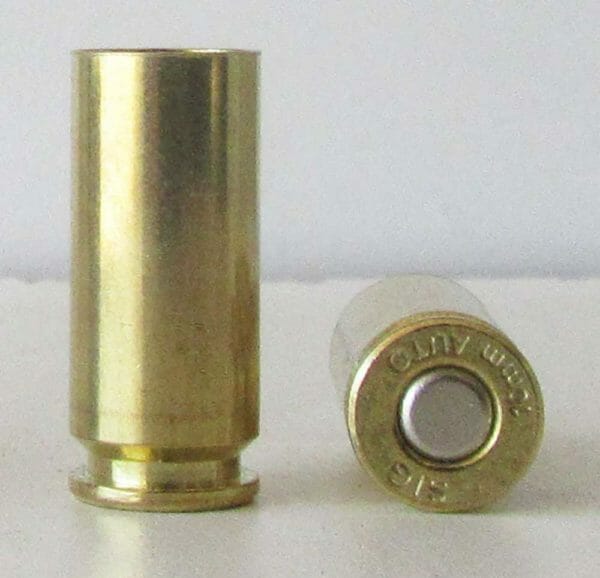
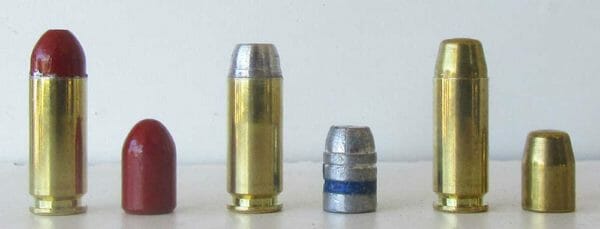
Reloading Info for 10mm Brass
| LOAD | BULLET | VELOCITY | COMMENT |
|---|---|---|---|
| 5 grs 244 | 97 gr Inceptor | 961.31 | Nice |
| 10 grs Green | 97 gr Inceptor | 1708.67 | OK |
| 11 grs Blue | 180 gr FMJ | 1221.5 | Consistent |
| 11 grs Blue Dot | 180 gr FMJ | 1297.64 | Consistent |
| 10.5 grs Blue | 190 gr Cast | 1266.67 | Nice Load |
The other sample brass I received is the 45 auto. These loads were good though the 185 bullet was light and some of the cases were smoked which is normal with a light load. The operations required to get them ready for reloading showed consistency which a quality case will display. I use feel a lot as once you understand it a lot can be learned about the cases and how good they are. The same cases will be used to determine how long they will last before failures occur. With a straight case, the first problem is the body getting a split. With normal loads that will occur after a number of filings. When ammo is fired the case expands so when it is sized, the diameter is slightly reduced and after a number of firings, they work harden which makes them brittle. That is normal unless it happens after only 1 or 2 firings. Hot loads will wear out the cases faster due to the extra stress.

Reloading Info for 45 Auto Brass
| LOAD | BULLET | VELOCITY | COMMENT |
|---|---|---|---|
| 6.5 grs WW 244 | 135 gr Inceptor | 1119.17 | Fantastic Load |
| 6 grs Red Dot | 135 gr Inceptor | 1075.83 | Good Load |
| 7.5 grs WW 244 | 125 gr CMA Dragon Tooth | 1270.27 | Good Load |
| 6 grs WW 244 | 185 gr Copper HP | 821.18 | Nice |
| 7.5 grs Green | 185 gr Hornady HP | 954.23 | Mild |
| 5.5 grs Green | 230 gr FMJ | 713.54 | Consistent |
| 6 grs Green | 230 gr FMJ | 814.18 | Good Load |
| 7 grs Target | 230 gr FMJ | 978 | Very Warm |
Just a note the Inceptor bullets used are a composite type. They are lighter than standard so with the 135-grain recoil is reduced and they are available in a variety of calibers and styles. I have tested them to a great extent and they are well worth considering for some hunting, target, and self-defense applications. For more info go to Inceptor Ammo. The Dragon’s tooth was made by a custom bullet maker. He makes a lot of custom and odd designs so if you want something a little different try CMA Custom Ammo for more info.
Reloading is growing rapidly which is good for everyone.
It seems that every day new companies are developed to make various shooting products including brass. In my view, there is room for any company that produces good products at reasonable prices. I definitely put Sig in that category and anyone looking for the calibers they produce should try their products. I have shot some of SIG’s brass several times and there have been no problems, based on my experiences I can recommend it for your use. You won’t be sorry.
About Bob Shell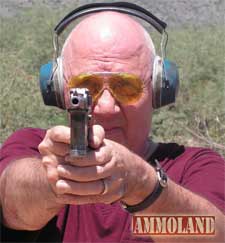
A Custom Reloader of Obsolete and Antique Ammo. Bob Shell, writes about the subject of Guns, Ammo, Shooting, and Related Subjects. Visit: www.bobshellsblog.blogspot.com.
